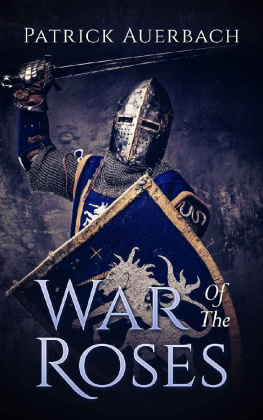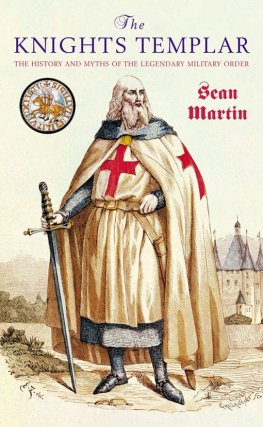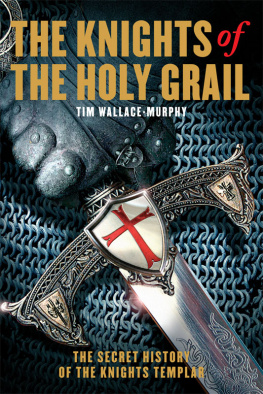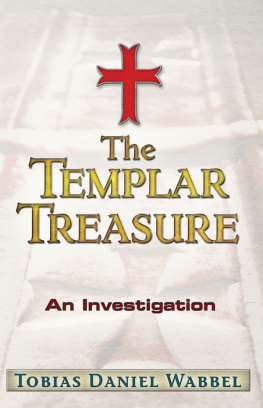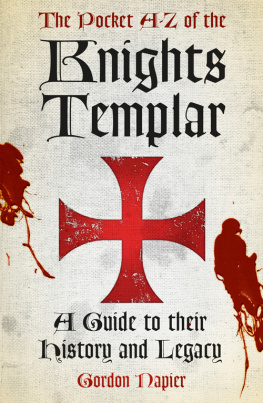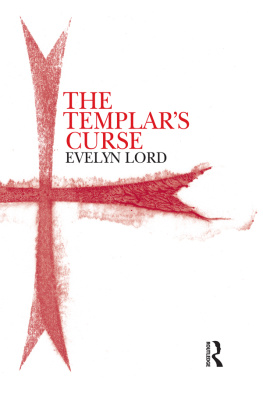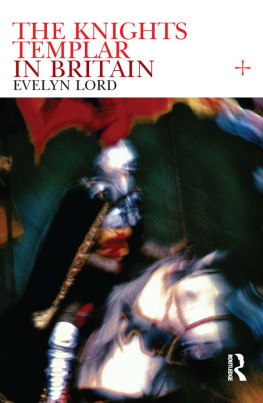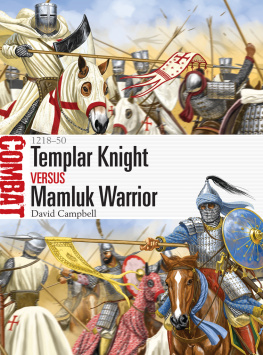The Knights Templar
The True and Surprising Story of Historys Most Secretive Order
Patrick Auerbach
Introduction
First of all, I would like to congratulate and thank you for downloading this book! In the chapters that follow, a world of religious empire, warfare, mystery and treasure will be revealed to you. Regarding the Knights Templar, surely you have wondered where fact meets fantasy. The two have become almost indistinguishable as the tale tumbles through the hands of storytellers throughout history. Here, we will take a look at historic accounts and publications as well as lore and speculation to cover what is, if nothing else, a fantastic tale of medieval warfare, glory, greed and power.
The saga of the Knights Templar came to be in the aftermath of the First Crusade. At the height of their power they indebted major nations, held countless properties and assets and became a state to themselves. They had the power to move freely throughout Europe and held privileges that were above the law and even sometimes the church. Their downfall, however, would be exactly the wealth that contributed to their rise of influence. Throughout medieval history, there arent many stories that are quite as sensational and tragic as that of the Knights Templar.
The holy wars which led to the emergence of the Order were, in many ways, fought for the same reasons that motivated and inspired the Templars. Religion was obviously at the forefront of the agenda. To the knights and in the Christian empire, faith and morality were ruling forces that were revered. Many participants were, in fact, religious martyrs who truly believed they were fighting for Christ himself, or at least thats how it began. Many of the first participants in the Crusades were criminals seeking pardon. These men were petty compared to those of power and their plots to obtain wealth and power under a religious guise.
During this time the common citizen of Europe lived in poverty, and some would even say jealousy. The attractiveness of the East and of Muslim societies that were wealthy and prosperous plagued the minds of westerners, especially church leaders. Combined with this was the issue of communication. History has proven that Muslim countries were surprisingly tolerant of Jews and Christians, allowing them to pray and travel freely. No one in Europe would have known this, however. Pope Urban II, who called for the First Crusade, motivated by his own agenda religious or otherwise capitalized on the crowd. He was reported to have been an exceptional orator, and in his speech to the council he incited Christians against the eastern nations claiming that they were desecrating Christian temples and assaulting Christian pilgrims. All of these allegations were untrue of course, but the public rallied behind the cause. This, along with the general mind-set of the people, could explain why a previously peaceful people were suddenly so quick and ruthless in liberating the holy city. Another argument is that the impoverished Christian kings were so eager to exploit eastern riches that they pressured the Pope into calling for a holy war. Others claim that Pope Urban II acted alone to serve his own corrupt agenda.
Donald Queller from the University of Illinois has said that The French knights wanted more land. Italian merchants hoped to expand trade in Middle Eastern ports... Large numbers of poor people joined the expeditions simply to escape the hardships of their normal lives. As the greedy hordes made their way across enemy territories, countless Muslims, Jews and Christians were killed in the name of riches and religion.
Chapter 1: The Rise of the Knights Templar
For two centuries during the Middle Ages, one of the most powerful and wealthy of the Western Christian military orders were the Poor Fellow-Soldiers of Christ, or more commonly, the Knights Templar. For over 2 centuries, blood ran through the streets in the name of God, borders were drawn around kingdoms and alliances were formed. Out of the bloodshed emerged tales of martyrs, warriors and relics like the spear of destiny and the Holy Grail.
In November of 1095, Pope Urban II summoned 300 members of the clergy to Clermont, France. There, he pleaded with Christians to take up arms against Islam in the Holy Land. His speech was extremely well thought out. He pleaded to his people to stop warring amongst themselves and appealed to all classes. To let those who have been robbers now become knights, he called out to the council. Anyone was welcome during the Crusades, whether they were a soldier, knight or commoner. The West had a few specific goals in this; one being to block what was seen as an Islamic incursion and to gain control of Jerusalem, which had previously been ruled by the Arabs and Turks since the seventh century. The Christian kings of the west were all too aware of the imminent threats of other emerging religions and empires around them. Understandably, they were keen on creating a monastic order of defense to keep their kingdom intact and to take the city of Jerusalem under Christian rule. They called themselves a coalition chosen by God himself to fight to the death in righteous and Holy battle.
The Catholic Church offered a powerful motivation to join in Holy battle. Referred to as an indulgence, this was essentially a pardon from any previous crime or debt, and this ensured that the first Crusade would be the most ruthless of them all. Many of the participants were criminals of some sort who wished to start anew once they reached Jerusalem. Rapists, murderers and thieves alike joined the first Crusade and marched east slaughtering Muslims on the promise to have their records wiped clean. For as soon as they took back the Holy Land, all of their crimes would be absolved. Thousands responded to the call to battle and took up their swords. Three years of slaughter and bloodshed followed. The Christians of the west rallied with their allies in the Byzantine to push back the Turks and Arabs further and further south toward Jerusalem. Once the Crusaders arrived in the Holy Land, a historical battle ensued. Paintings and personal accounts from the event attest that it was indeed a brutal fight of faith.
When Jerusalem was recaptured in 1099, many Christians wished to make the pilgrimage to the Holy Land in order to find themselves in the place of Jesus birth among other religious reasons. However after the fall of the city, many of the Crusaders had moved on and were no longer protecting the area. Although Jerusalem itself was considered relatively secure at the time, just outside of the city was an exceptionally lawless wilderness. With the influx of religious travelers, a window was opened up for marauders and thieves. On their trying voyage to the Holy Land, hundreds upon hundreds of pilgrims found themselves victims of highwaymen and robbers. These outlaws would prey upon the pilgrims - beating, robbing and in many cases, killing them as they made their way from the coastline of Jaffa to the Holy Land of Jerusalem.
In 1119, Warmund and Baldwin II of Jerusalem were approached by a French knight Hugues de Payens, a wealthy nobleman from the Champagne region of France who served in the first Crusades. De Payens proposed to recruit a handful of relations who vowed to protect the Christian travelers to the Holy Land. The general idea was to have professional soldiers living as monks with a strict moral code and the abilities of noble warriors. The proposition was accepted at the Council of Nablus in early 1120 for political reasons as well as for the safety of pilgrimage.
The Templars were granted headquarters on the Temple Mount in the Al-Aqsa Mosque. The temple was widely believed to have been the ruins of the Temple of Solomon and therefore, that is what it was referred to by the Crusaders. From that location, the Order took the name of Templar knights, or the Poor Knights of Christ and the Temple of Solomon. The original Order included nine men such as Andre de Montbard and Godfrey de Saint-Omer. The knights had very limited resources and relied on charitable contributions to survive. The fact that they were endorsed officially by the Roman Catholic Church in the year 1129 helped to secure the Order as a favored charity throughout the Christian elite. The Templars were innovators with an early form of finance in banking and building which helped to maintain their status and wealth. The bank system began in order to protect not only the lives of Christian travelers, but their money as well. They created a shadow system of banking with credit cards and checking accounts still observed today. The power of the banks, along with the wealth from interest rates and contributions, all came together in combination to thrust the Templars into the forefront of society. A relatively short time after the bank's creation, much of the European monarchy was in debt to Templar banks.



